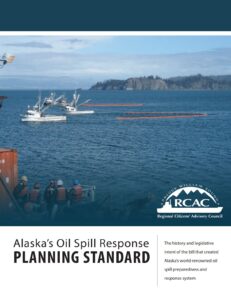Document Author: Nuka Research Planning Group LLC
Alaska’s Oil Spill Response Planning Standard (Graphic Version)
 The full report documents the history and legislative intent of the bill that created Alaska’s world-renowned oil spill preparedness and response system.
The full report documents the history and legislative intent of the bill that created Alaska’s world-renowned oil spill preparedness and response system.
See also:
- Full report: Alaska’s Oil Spill Response Planning Standard – History And Legislative Intent
- Article: How Alaskans redefined oil spill prevention and response
Download the report:
Wind Speed and Wave Height at Seal Rocks Buoy During Outbound Tanker Transits, 2010-2017
Eight outbound tankers crossed the Entrance in conditions above wave height closure limits (15 feet) between January 1, 2010 ? September 30, 2017. No transits were made in wind conditions above closure limits (45 knots).
This analysis does not identify times when the U.S. Coast Guard’s Vessel Traffic Service actually closed Hinchinbrook Entrance, and so should not be construed as demonstrating operator non-compliance with Coast Guard direction. However, it does illustrate the importance of ensuring that escort tugs are capable of saving a tanker in conditions at and above the wave height closure limit (at least) since laden tankers are operating in Hinchinbrook Entrance at least once a year in these conditions.
When considered against a September 2017 analysis of conditions during which towing exercises were conducted from 2013-2017, it was determined that 100% of the towing exercises in that time period were conducted in average wave heights of less than 3 feet, while 65% of the outbound tanker transits occurred in wave heights above 3 feet.